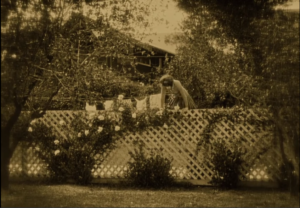I first read Northanger Abbey while abroad at Oxford last year in my second term. It was my first (and only) book I was able to and did request, and I was able to read it with my favorite tutor, making the experience intellectually special. Jane Austen does not really resonate with me very strongly otherwise, but a gothic parody seemed tailor-made for my interests of the gothic genre and camp, so I wanted to try. I had greater emotion attached to the novel beyond the intellectual, though. I had been really disappointed with my first term for a number of reasons, the main of which included my first term tutor disparaging my supposedly lacking time management skills. I knew it wasn’t true, but it did hurt- and I did wonder. As such, I resolved to overprepare with contemporaneous Gothic novels to contrast against Northanger in my second term by reading as much as I could. This included works like Vathek and The Old English Baron, but also more pertinent ones like The Romance of the Forest and The Mysteries of Udolpho. I loved the Radcliffe not for themselves, but what they represented. They reminded me very much of the YA trash I read as a teenager and what continues on the market, and I really enjoyed thinking about the parallels in tropes and what that says about how far or little we’ve come in depicting women. My prep reinvigorated my intellectual energy and sense of fun, and it actually made me excited for the next term.
The depiction of Catherine Morland defines my love of this novel. I consider her a keystone figure for the depiction of cringe teenage girls everywhere. For ultimately, most people are more like the occasionally-socially unsure and perhaps-obsessive Catherine than witty and proud Elizabeth Bennet. Despite what I had read in various scholarship positioning Catherine Morland as a silly and stupid heroine, I believed her to be treated realistically and without the underlying scornful aggression that sometimes underlie parodies. The text maybe laughs at her antics, sure, but not her as a person, and always allies with her when she expresses deep distress. Though Catherine adores Gothic novels, she doesn’t actually start out with much familiarity of them: rather she wants to be a heroine (Austen 17). She wants to be someone, in the gendered capacities her world will allow. Gothic novels give her an outlet to explore this rather than them being the strict object of obsession. This aspect of life has not gone away: novels like Twilight and the Sarah J Maas books may be bad on an ideological and prose level, but the archetypes they invoke of a powerful heroine, a sexy and dangerous-but-not-too dangerous promise of love are speaking more to a psychological need of security than quality literature. No matter their era, people, especially young people, use books to figure out their life and how they should behave. The cringe young people of today and Catherine are no different.
Northanger Abbey was also what I needed at that point of reading. Through Catherine, the Gothic novel and the chick-lit they represent are gently critiqued, but ultimately affirmed as worthwhile for fulfilling that same psychological need. In the end, Catherine is also ultimately a normal girl who learns to be the person she wants to be unlike the Radcliffe heroines who are born perfect. She makes mistakes and misjudgments, but she learns. To me, that’s really affirming. Most are just “normal’ people, and have to work hard to get somewhere. Her choice in educational fiction also is not necessarily wrong, either: Gothic novels present real problems and anxieties through an uncanny mirror, but that mirror only works if there is something to be afraid of in the first place. Perhaps Catherine doesn’t have ghosts after her, but she does have men in her life who want to make her feel small so they can control her. Though people try to mislead her in various ways, she ultimately has to decide what’s wrong or right based on her own determinations, and instead has to accept her own judgements on the right way to be. As someone who has always cherished feedback and was conflicted about the ones I was currently receiving, Catherine’s resolutions affirmed me emotionally as well as intellectually.
Ultimately, I don’t know how “good” my thesis will turn out. But I will like it. I will like it for myself and all the past, present, and future cringe teen girls Catherine represents.
Works Cited:
Austen, Jane. Northanger Abbey. Penguin Books, 2003.








